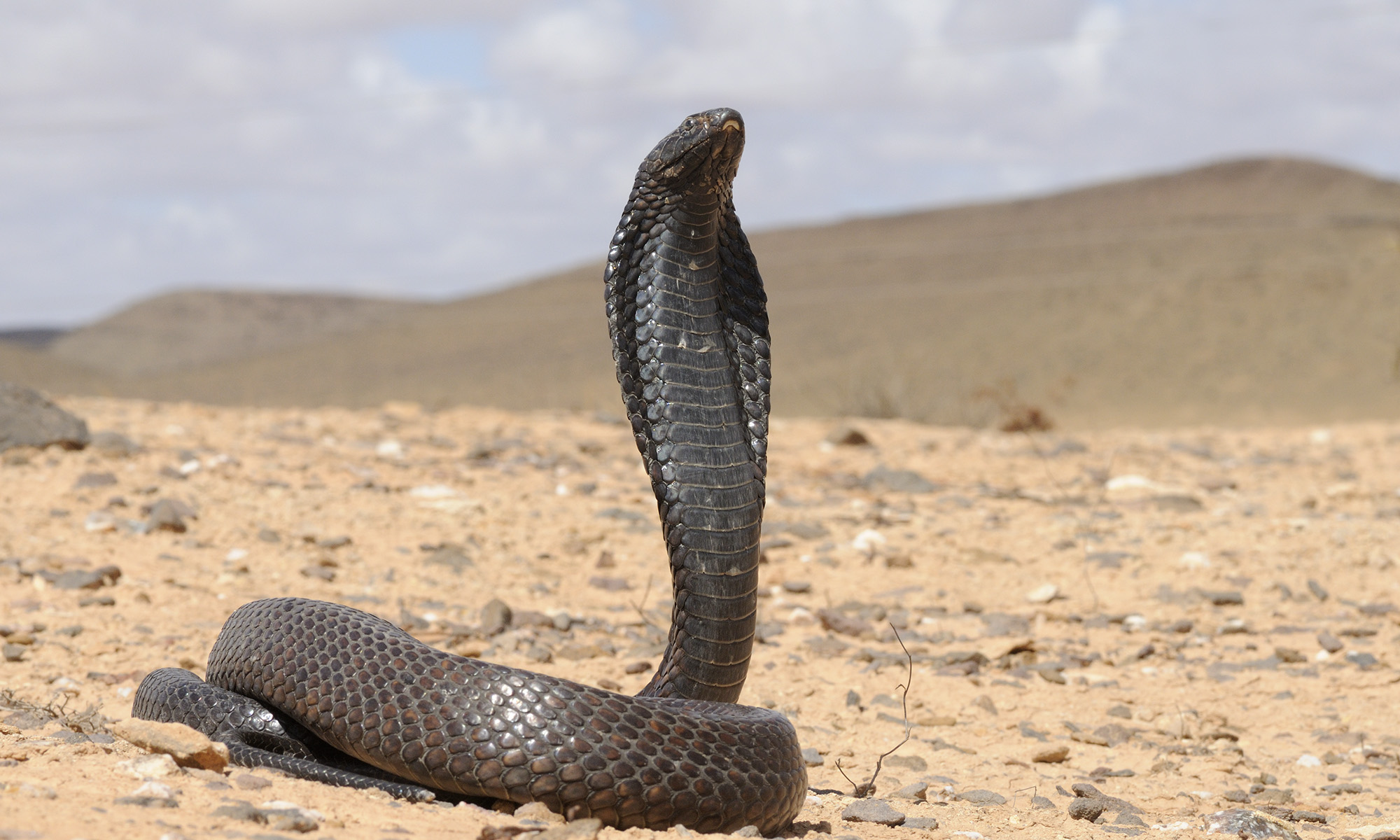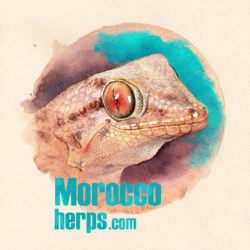Sorry, this entry is only available in European Spanish.
Echis leucogaster at Morocco
The viper Echis leucogaster is probably the rarest and most hard to see snake in Morocco, where this species maintains a small number of relict populations.
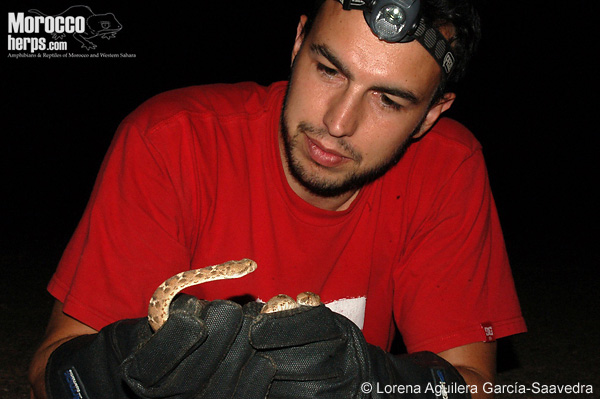
Our friend Gabriel Martínez del Mármol, co-founder and member of the authors team of www.moroccoherps.com has traveled to Morocco in search of this elusive snake. And he has found not one … but two!
Share your images
We have created a Flickr group for anybody who has photographs or videos of amphibians and reptiles shot in Morocco or Western Sahara and desires to share them.
http://www.flickr.com/groups/moroccoherps/
If we were interested in publishing any of the photographs added to the group in the gallery of the web, we would contact the author to ask their permission. For adding photographs to the group, these must be of amphibians or reptiles photographed free in Morocco or the Western Sahara. This means that we will not accept photos of the injured and dying cobras from the Djemma El-Fná Square in Marrakech, nor chameleons and turtles locked in cages that you can find in many of the Moroccan souks. We will accept the photographs of captured species “in hand” if the species or the circumstances require it, although, we will give preference to the photos that show the animals in their natural habitat or attitudes. The same conditions are applicable to videos.
Spring 2011 Expedition: Final List
The team that remained in Morocco to try to find the elusive Varano has returned.
In addition to finding the Varanus griseus, a species more abundant toward Egypt and the Middle East but very scarce in Morocco, they also found these interesting species to be added to the list of species of the previous post:
– Alytes maurus
– Bufo brongersmai
– Mauremys leprosa
– Tarentola deserti
– Tarentola annularis
– Ptyodactylus oudrii
– Stenodactylus mauritanicus
– Tropiocolotes algericus
– Trapelus mutabilis
– Uromastyx nigriventris
– Uromastyx dispar
– Varanus griseus
– Timon tangitanus
– Podarcis vaucheri
– Acanthodactylus busacki
– Acanthodactylus boskianus
– Acanthodactylus dumerili
– Chalcides ocellatus
– Myriopholis algeriensis
– Spalerosophis dolichospilus
– Malpolon insignitus
– Psammophis schokari
This makes a total of 44 species, 8 amphibians and 36 reptiles.
Spring 2011 expedition: Back to home…
Part of the team has returned with the memory cards full of pictures and videos, while another part continue in Morocco in search of the elusive Varanus and the mythical Echis.
From the logistics point of view, the trip was from the beginning a complete disaster, with one of the cars, a Land Rover Defender, broken down just as we touched African soil, forcing us to completely rethink the trip and to go towards the SW instead of SE as planned.
However, the bad luck with our vehicles contrasted with the good luck with herpetofauna, despite the setbacks we found and photographed some of the most emblematic species of reptiles of Morocco.
Before doing an exhaustive account, to confirm the identifications and waiting for the rest of the team to return, the list of species observed and photographed (alive) can be summarized as follows:
– Pelophylax saharicus
– Bufo mauritanicus
– Bufo boulengeri
– Pleurodeles waltl
– Hyla meridionalis
– Discoglossus scovazzi
– Testudo graeca
– Chamaeleo chamaeleon
– Hyalosaurus koellikeri
– Tarentola mauritanica
– Tarentola chazaliae
– Saurodactylus brosseti
– Natrix maura
– Boaedon fuliginosus
– Hemorrhois algirus
– Naja haje legionis
– Bitis arietans
– Chalcides polylepis
– Chalcides sphenopsiformis
– Acanthodactylus maculatus
– Acanthodactylus lineomaculatus
– Acanthodactylus aureus
To this list must be added numerous citations of species found on the roads run over, drowned in in cisterns, or stoned by local people: Dasypeltis sahelensis, Scutophis moilensis, etc…
Spring 2011 expedition to the SE of Morocco
Taking advantage of the late Easter vacations this year, the team of www.moroccoherps.com is embarking in a new herpetology expedition to the north of Africa. The idea is to prospect the arid SE visiting Figuig and the Tigri and Chebbi ergs, although the route is flexible and we will decide at the moment depending on the meteorology, the cars, Islamic revolutions and other unexpected problems.
When we get back we hope to show here a good collection of photographs of cobras, desert Varanus, and other species, probably not so famous, but not less fascinating. If as usual, the cobras and Varanus do not appear, at least we will have some tales to tell.
Myriopholis algeriensis, the strange vermiform snake
In the species section you can find the working file of Myriopholis algeriensis.
It is a surprising case of multiple convergent evolutions, to the fossorial apoda lizards, we have to add a family of strange fossorial snakes that look, yes… like worms.
The Leptotyphlopidae, whose only representative in Morocco and Western Sahara is Myriopholis algeriensis, although the family groups nearly one hundred species distributed in America, Africa and Asia, are real small size snakes that are extremely thin and have interesting adaptations to their way of life.
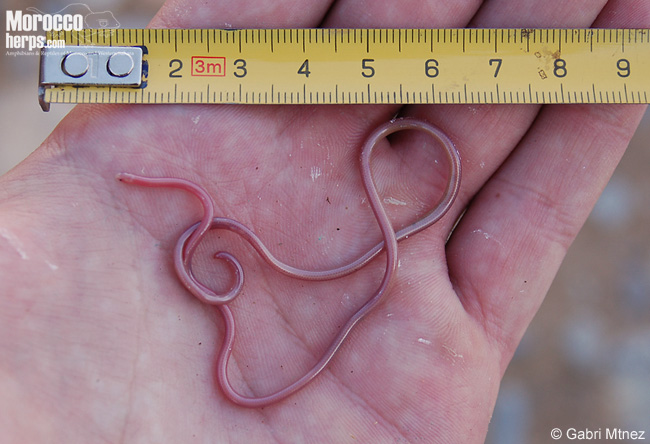
Little is known about the presence of Myriopholis algeriensis in Morocco and Western Sahara more than a few individual findings; however the difficulty in detecting this species could have contributed to this more than its real distribution and abundance.
More information in the Myriopholis algeriensis file.
The Puff Adder or monarub
In the species section you can find the working file of Bitis arietans.
The Puff Adder or monarub (Bitis arietans) is a hefty viper with a wide distribution in Africa that presents some relic populations in Morocco, of great interest, although greatly endangered.
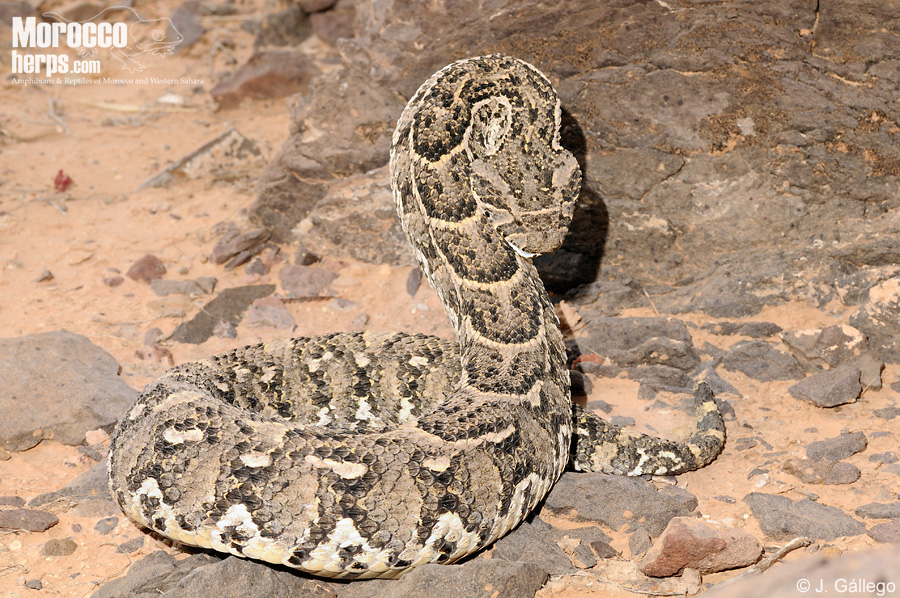
The run overs and incontrolated captures to serve as tourist amusement in places like the Djemma El-Fna square is putting these populations close to their extintion.
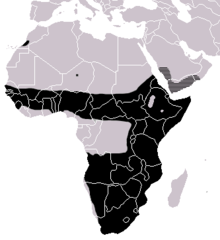
When we travel to Marrakech or similar cities, we should remember that every coin we give to snake-charmers contributes to take two emblematic species, the Puff Adder from NW Africa and the Moroccan Black Cobra, a step closer to extinction.
If we ask the snake charmers, they will swear over the health of their children that they love the snakes and treat them like of their family, as they make a living of them. The reality is very different, and the snakes agonize several weeks, after their fangs are taken out with pliers, with their head inflamed because of the sores and the infection, dying shortly after and being replaced by other captured in the wild. This has greatly reduced the populations of both species.
If vipers normaly have bad press, Bitis arietans is suposed to be the snake that more human deaths produces in África, although they are no oficial statistics, and in many countries they are no statistics at all.
More information in the Bitis arientans file.
www.moroccoherps.com is born
We are happy to launch www.moroccoherps.com, a newly designed WEB that hopes to host in a single space all the information and the most complete collection of species descriptions about the reptiles and amphibians of Morocco and the Western Sahara.
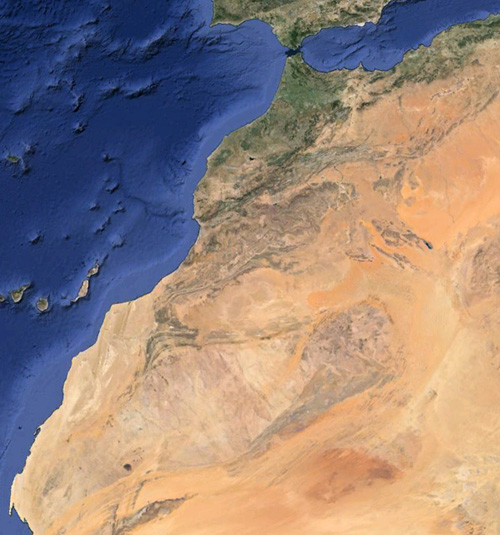
The northwestern part of the African continent is special for the richness and variety of its amphibian and reptile fauna, being considered as a real hotspot of biodiversity. Unfortunately, because of the socioeconomic circumstances of the area the protection of its nature richness is not a priority of the local authorities, the imminent and future economic development of the area, especially in the North, with changes in the mode of resources exploitation and the transformation of their traditional activities, foretell important menaces for the wild flora and fauna.
The reptiles and amphibians that include many endemisms (species that cannot be found in any other place of the world) together with relic isolated populations of subtropical species with a great genetic interest are especially vulnerable to brusque changes in agriculture and cattle farming techniques and to habitat transformation, like the development of extensive monocultures o mechanization, and the uncontrolled urbanization of coastal areas.
This WEB page pretends to contribute to improve the knowledge, poor in many cases, about the herp species in the area, a necessary and previous step towards their protection.
With at least 115 species present in the area, many of them not studied, this is a very ambitious project with a lot of work in front of us. We have started publishing some sketches of species pages that will pass to a definitive status as the information they contain is completed, revised and validated. The species page of de Emys orbicularis inaugurates our collection of pages about the amphibians and reptiles of Morocco and the Western Sahara.
We pretend to give a detailed description of each species to permit its identification and differentiation from other similar ones. Furthermore, the species pages will include the ecology and habits, the distribution area and the abundance of the studied species, the state of conservation of the known populations, the menaces they have, and all illustrated with many original photographs shot by the authors and collaborators team. The information we include does not only come from the revision of existing bibliography, but it will be completed with our personal observations and own data from the authors of the WEB.
We animate all people interested in amphibians and reptiles to collaborate sending photos, cites, observations or any other data, to link and give publicity to the WEB, to comment in the blog and to subscribe via the RSS chanel, Twitter or Facebook, to be informed of actualizations, articles, activities and new species pages published in the WEB.
